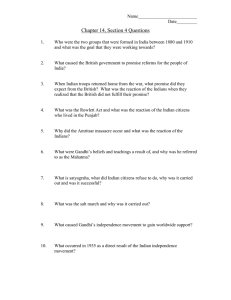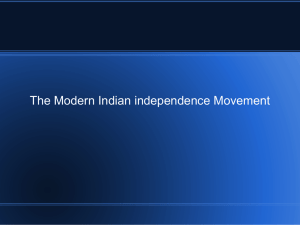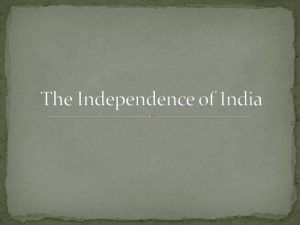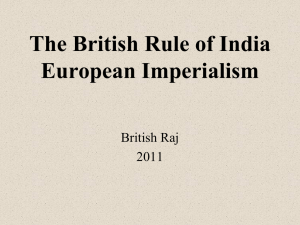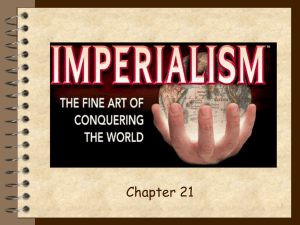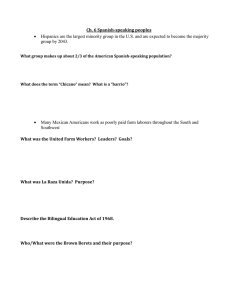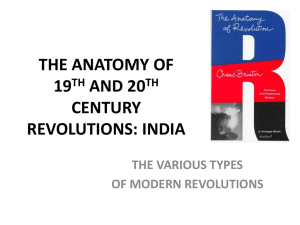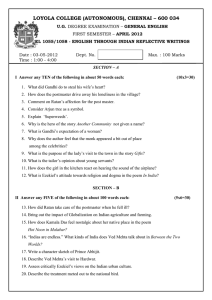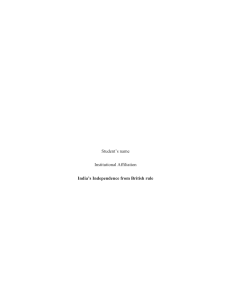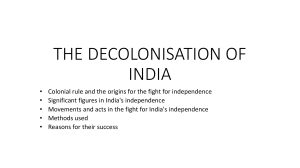I N D I A
advertisement
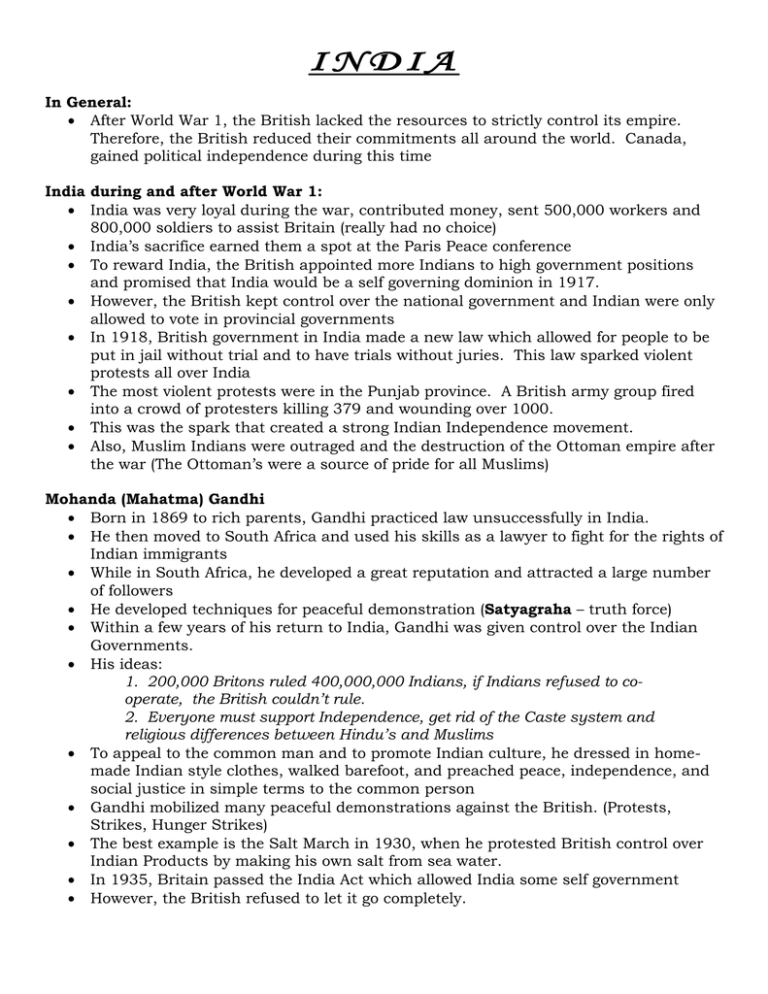
INDIA In General: After World War 1, the British lacked the resources to strictly control its empire. Therefore, the British reduced their commitments all around the world. Canada, gained political independence during this time India during and after World War 1: India was very loyal during the war, contributed money, sent 500,000 workers and 800,000 soldiers to assist Britain (really had no choice) India’s sacrifice earned them a spot at the Paris Peace conference To reward India, the British appointed more Indians to high government positions and promised that India would be a self governing dominion in 1917. However, the British kept control over the national government and Indian were only allowed to vote in provincial governments In 1918, British government in India made a new law which allowed for people to be put in jail without trial and to have trials without juries. This law sparked violent protests all over India The most violent protests were in the Punjab province. A British army group fired into a crowd of protesters killing 379 and wounding over 1000. This was the spark that created a strong Indian Independence movement. Also, Muslim Indians were outraged and the destruction of the Ottoman empire after the war (The Ottoman’s were a source of pride for all Muslims) Mohanda (Mahatma) Gandhi Born in 1869 to rich parents, Gandhi practiced law unsuccessfully in India. He then moved to South Africa and used his skills as a lawyer to fight for the rights of Indian immigrants While in South Africa, he developed a great reputation and attracted a large number of followers He developed techniques for peaceful demonstration (Satyagraha – truth force) Within a few years of his return to India, Gandhi was given control over the Indian Governments. His ideas: 1. 200,000 Britons ruled 400,000,000 Indians, if Indians refused to cooperate, the British couldn’t rule. 2. Everyone must support Independence, get rid of the Caste system and religious differences between Hindu’s and Muslims To appeal to the common man and to promote Indian culture, he dressed in homemade Indian style clothes, walked barefoot, and preached peace, independence, and social justice in simple terms to the common person Gandhi mobilized many peaceful demonstrations against the British. (Protests, Strikes, Hunger Strikes) The best example is the Salt March in 1930, when he protested British control over Indian Products by making his own salt from sea water. In 1935, Britain passed the India Act which allowed India some self government However, the British refused to let it go completely.
